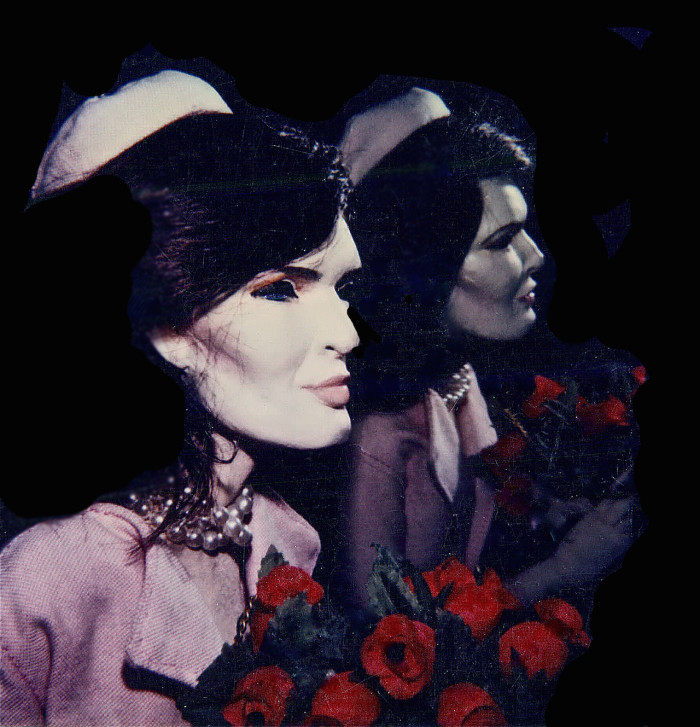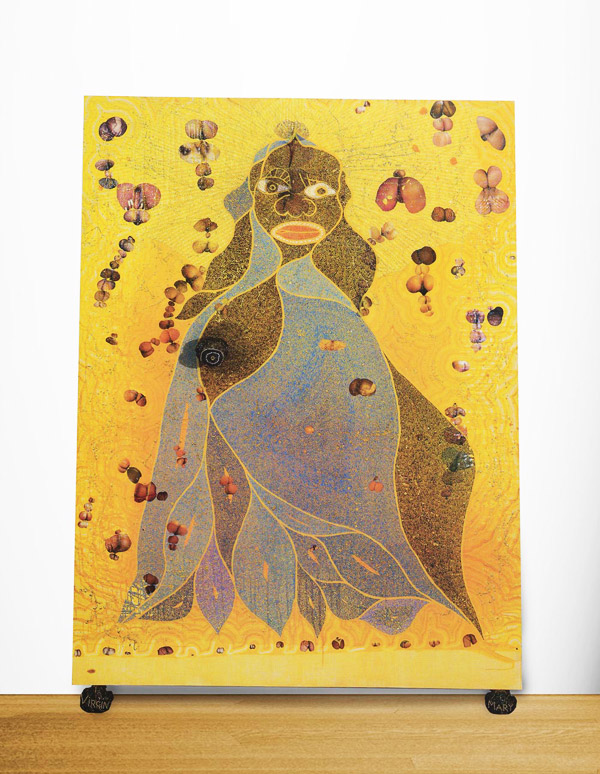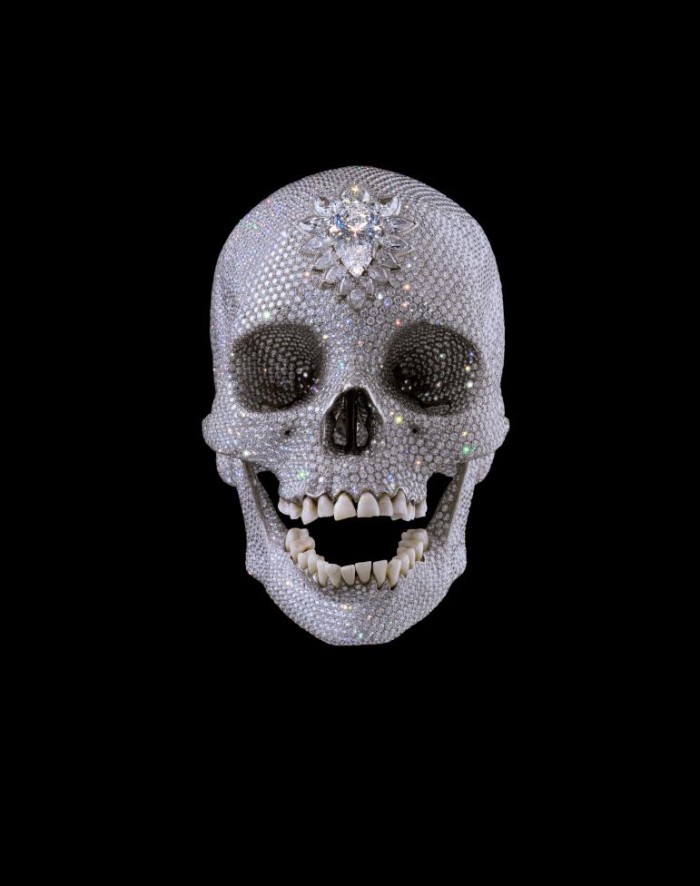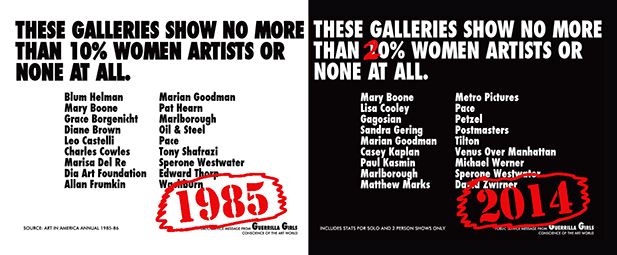Why Has Contemporary Art Focused on Shock and Disruption?
Baudelaire and the 19th-century French decadent poets famously laid downwards the imperative to "stupor the suburbia." Twentieth-century avant-garde movements answered this call, using unheard-of materials and modes to make new fine art for a new era. Simply innovation has gone from being a feasible, world-edifice artistic strategy to a tech buzzword and a prerequisite for artists seeking blue-bit mega-collectors. Late commercialism has robbed shock of its political value. The terms of transgression accept changed. The modernists and their successors reinvented art—now it'due south time to reinvent the art market.

In 1999, Charles Saatchi'south famous "shock art" exhibition, Sensation, came to the Brooklyn Museum. One painting in the testify—which, at the time, Jerry Saltz chosen "the work that launched a k slurs"—inspired detail public outrage: Chris Ofili's The Holy Virgin Mary (1996). The gorgeous piece features a stylized black woman surrounded by 100 images of female genitals and butts. Her breast is fashioned from elephant dung, and the canvas is propped on two lumps of the same scatological material, one inscribed with the word "Virgin" and the other "Mary." Rudy Giuliani, New York's one-time mayor who is particularly famous for his leadership in the wake of 9/11, called the work "sick stuff" and unsuccessfully attempted to shut down the exhibition. Last calendar week, on June 30, 2015, the painting sold for iv.5 million dollars at a Christie'southward evening sale in London.

In 1917, almost eighty years before Ofili made his Mary, Marcel Duchamp debuted his now-iconic readymade sculpture Fountain, an appropriated urinal that was similarly deemed obscene and devoid of artistic value. Fountain is, of course, now among the nigh seminal works of modern fine art, and its transgressive claim—that art could be an intervention instead of an invention—changed the field fundamentally and forever. Its legacy includes one time-shocking works like Judy Chicago'southward installation The Dinner Party (1974-79), in which historical feminists are represented by plates adorned with vulvas; Chris Burden's Shoot (1971), in which the artist commissioned a friend to shoot him in the arm with a .22 rifle from 15 anxiety away; and Andres Serrano's Piss Christ (1987), a photograph featuring a plastic crucifix submerged in urine that acquired Jesse Helms, North Carolina's notoriously harmful right-wing senator, to say of Serrano, "He is not an artist, he is a jerk."
Baudelaire, Rimbaud, and their boyfriend French poets of the late nineteenth century laid down the imperative to "daze the bourgeoisie." Advanced art movements—from Cubism to Dada to Surrealism to Futurism and others—did just that. They employed shocking materials in shocking means, obliterated conservatism (creative and otherwise) and prompted irate responses from politicians like the Giuliani and the Helms of their day.
But The Holy Virgin Mary is now worth 4.5 one thousand thousand dollars, and the terms of transgression have inverse. In 1991, Saatchi, an advertising mogul, commissioned Damien Hirst's The Physical Impossibility of Expiry in the Mind of Someone Living, a taxidermied 14-foot tiger shark suspended in a tank filled with formaldehyde. In 2004, he sold information technology to a hedge-fund-managing billionaire for 12 1000000 dollars. Hirst, the male monarch of the irreverent Young British Artists (YBAs), went on to go the affiche child for the commercial, wealth-saturated fine art earth. In 2007, he spent 28 million dollars producing For the Love of God, a skull made entirely of diamonds—legend has it that he bought and then many of the gems at one time that their market price actually fluctuated. In 2012, his Spot Paintings appeared in all 11 branches of the Gagosian Gallery empire, and that same year, he collaborated with Mary-Kate and Ashley Olsen on a line of luxury backpacks. In his book The $12 Million Blimp Shark, Don Thompson writes:
"How does an artist other than Hirst get past these gatekeepers [branded dealers]? Most often with piece of work that is big on creativity, innovation, or stupor value, rather than through traditional skill in draftsmanship or use of color. The first stuffed shark attracted more attending and much more money than the thousandth not bad color field painting. Marc Quinn's cast of his ain head fabricated from his frozen claret, or Marcus Harvey'due south portrait of kid murderer Myra Hindley made with tiny images of a kid'south hands, attracted more publicity than conventional art."

"Innovation," once a deviant and commercially non-feasible artistic strategy (Van Gogh famously only sold one painting during his lifetime), has get a marketable quality for baddest gallerists and auction houses. To apply an apt idiom, shock value has jumped the shark. What made the richest collectors attracted to this kind of fine art? One speculation is that, since contemporary art ofttimes cannot exist described using the language of aesthetics and tin can exist difficult to capeesh without context, "creativity" is easier to identify than quality. Another is that, since art is now, in Don Rubell'due south words, "an international currency," the riskiest investments have the well-nigh financial potential.
Speaking more generally, though, innovation has gained an entirely new meaning in our culture over the past two decades. "Disruption," once the beating heart of the avant-garde, is now the guiding buzzword of Silicon Valley. In her 2014 New Yorker article "The Disruption Machine," Jill Lepore writes:
"Ever since [Clayton M. Christensen's book] The Innovator's Dilemma, anybody is either disrupting or being disrupted. At that place are disruption consultants, disruption conferences, and disruption seminars. This fall, the Academy of Southern California is opening a new program: 'The degree is in disruption,' the university announced. 'Disrupt or be disrupted,' the venture capitalist Josh Linkner warns in a new book, The Road to Reinvention."
When I searched for the word "disruption" in the journalism athenaeum of Longform.org, the showtime hit was a headline that read "V Huge Industries that Never Saw Disruption Coming." Looking closer, I realized that it was a sponsored mail from Hewlett-Packard. Disruption, a frequent punchline on the HBO comedy Silicon Valley, is the stuff of satire. And in whatsoever case, the tech industry certainly wins the accolade for virtually globe-shattering innovations in the xx-first century.
The question, then, is how can art have political weight when the avant-garde is no longer avant-garde? The answer is probably non to exist found in exhibitions similar All the Globe's Futures, this yr's Venice Biennale, curated by Okwui Enwezor, whose overarching theme related to "the confluence of sociopolitical changes and radical historical ruptures." Many of (fifty-fifty the best) pavilions are heavy-handed and focus on hot-push issues, all lacking future. Existent futurity comes from undeniable quality—the power, as it were, to stand the test of time. Terminal week, I was talking to a disillusioned young artist who lamented that he and his peers are trained to aspire to quit their day jobs, rather than to make proficient art. What if the goal was to make things complex, insightful, beautiful enough to matter to people in different places, different times, unlike markets? It'due south long been the case that no medium is off-limits. We don't demand the new; we need the good. We need works that don't rely on "innovative" forms to build new worlds. Examples that accept recently been on my mind include Greer Lankton's dolls, Mike Kelley'southward sculptural renderings of Superman's native planet, and Sarah Charlesworth's meditative photographic juxtapositions.
In his essay "Paradigm Explosion," art historian David Joselit writes, "If art has political efficacy in the twenty-get-go century, information technology may lie in cultural diplomacy as opposed to the invention of advanced forms as new content." He argues for the redistribution of "epitome wealth," which is, of course, disproportionately concentrated in the (white) global Northward. In 2011, for instance, Yale Academy returned a collection of Incan objects found at Machu Picchu to Peru after 100 years of custody and a long international conflict; many such disputes remain ongoing.

In addition, it's no secret that most of the global art world'due south elite institutions still have, let's say, a demographic problem. It was 1985 when the Guerilla Girls commonage get-go released the data that the top eighteen New York galleries (including Pace, Mary Boone, Leo Castelli, and Marian Goodman) showed "no more than 10 percent women artists or none at all." The figures for 2015 at the corresponding galleries (including Pace, Gagosian, David Zwirner, and Paul Kasmin) showed "no more than twenty percent women artists or none at all." Co-ordinate to a major report on art manufacture sexism that ARTnews published earlier this year, only vii per centum of the 410 works from MoMA's permanent collection currently on brandish are past women, and even fewer by people of color. It'southward another instance of the imbalanced distribution of "image wealth." Joselit writes, "There is an entire political economic system of image circulation, which should exist of major concern to contemporary fine art," adding, "It's very of import to remember that what nosotros recognize as global is a tiny subset of globe art." Perchance this is inevitable, but there remains no dubiety that the market place and its maneuverers are (unsurprisingly) more interested in discovering the artists who will brand the trendiest brands than the ones who brand the best art. This occurs very often to the exclusion of women, people of color, disabled people, crumbling people, and especially whatever combination thereof. If there's anything left to disrupt, it'southward that.
Sources Consulted:
http://world wide web.newyorker.com/magazine/2014/06/23/the-disruption-machine?currentPage=all
https://ssl.www8.hp.com/hpmatter/consequence-no-5-summer-2015-thought-economy/five-huge-industries-never-saw-disruption-coming
http://www.nytimes.com/2015/05/29/arts/design/chris-ofilis-the-holy-virgin-mary-to-be-sold.html
http://mfanomfa.tumblr.com
http://www.npr.org/2012/01/01/143653050/finders-not-keepers-yale-returns-artifacts-to-peru
http://aaaaarg.fail/upload/don-thompson-the-12-million-stuffed-shark-the-curious-economics-of-contemporary-art-1.pdf
http://www.artnet.com/magazine_pre2000/features/saltz/saltz10-08-99a.asp
http://www.gagosian.com/exhibitions/september-08-2011–mike-kelley
http://www.guerrillagirls.com/posters/2015billionairesandartrecount.shtml
http://www.artnews.com/2015/05/26/taking-the-measure-of-sexism-facts-figures-and-fixes/
Naomi Klein, The Shock Doctrine, Knopf Canada, 2007.
David Joselit, "Paradigm Explosion" in Afterward Fine art , Princeton University Press, 2012.
fishbournemoothoung.blogspot.com
Source: https://terremoto.mx/en/revista/artafterinnovation/
0 Response to "Why Has Contemporary Art Focused on Shock and Disruption?"
Post a Comment